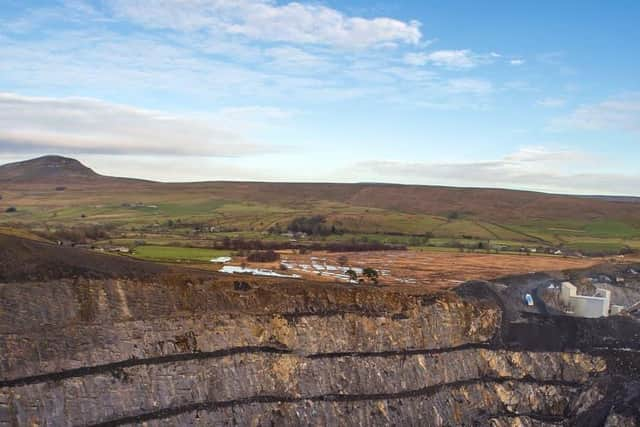Controversy over ‘major development’ runway stone quarry plan in national park
The park authority’s planning officers have concluded there are “exceptional circumstances” and it would be in the public interest to grant Tarmac permission to extend and deepen Dry Rigg Quarry, near Horton in Ribblesdale, until 2035.
The proposal will be considered on Tuesday following a High Court judge ordering the park authority to pay a resident the costs of her legal action over the authority’s planning committee in 2021 granting planning permission to Tarmac to extract 4.4 million tonnes of gritstone from the quarry.
Advertisement
Hide AdAdvertisement
Hide AdThe court order ruled the authority, which has a primary purpose to protect the park’s landscapes, did not correctly consider the impacts of the quarrying operation, which includes blasting.


Campaigners, including conservation pressure group Friends of the Dales, have called on the authority to reject the scheme, objecting to the “apparently never ending postponement to the end of operations and the restoration of the site”.
Residents and parish councils in the area have also objected to the extension, saying it trucks from the quarry spread dust across Ribblesdale, the raised bog and valley fen landscape of which would be harmed.
In its objection, Horton in Ribblesdale Parish Council stated: “Residents at Helwith Bridge will be subjected to dust particulates from road transportover an extended period of time…”
Advertisement
Hide AdAdvertisement
Hide AdAlthough the quarry is beside or close to the Swarth Moor and Ingleborough Sites of Special Scientific Interest and the Ingleborough Complex Special Area of Conservation Natural England has concluded that the proposed development will not have a significant adverse impact on the designated sites.
However, in a revised report planning officers said while the creation of 140m of new quarry face would have “a detrimental effect on the visual quality of the landscape”, the Ribblesdale landscape was typified by geology and natural features, but also by human influences such as farming and quarrying.
Underlining the case for extending operations at Dry Rigg, the report states it supports 36 jobs and local businesses and makes a “significant contribution to the local economy and to the economic health and vitality of communities within the national park”.
The report states the quarry is among a few sources of a high specification gritstone in the country that is used in road and runway surfacing for its skid resistant properties.
Advertisement
Hide AdAdvertisement
Hide AdPlanning officers have concluded the development’s “very limited effects on the environment, including visual and human amenity, the landscape character, and recreational opportunities”, could be mitigated.
They said while the proposal had “potential for increased levels of dust”, a planning condition to minimise dust levels could be attached to any consent.
The report emphasises while national planning policy advises decision-makers should give great weight to conserving landscapes and scenic beauty in national parks it also advises great weight should be given to the benefits of mineral extraction, including to the economy.
The report states: “Although the scale and extent of this proposal is significant it is considered that the impacts of the proposal are relatively limited and can be mitigated. In officers’ opinion planning permission can be justified even with the need to afford great weight to conserving and enhancing landscapeand scenic beauty.”